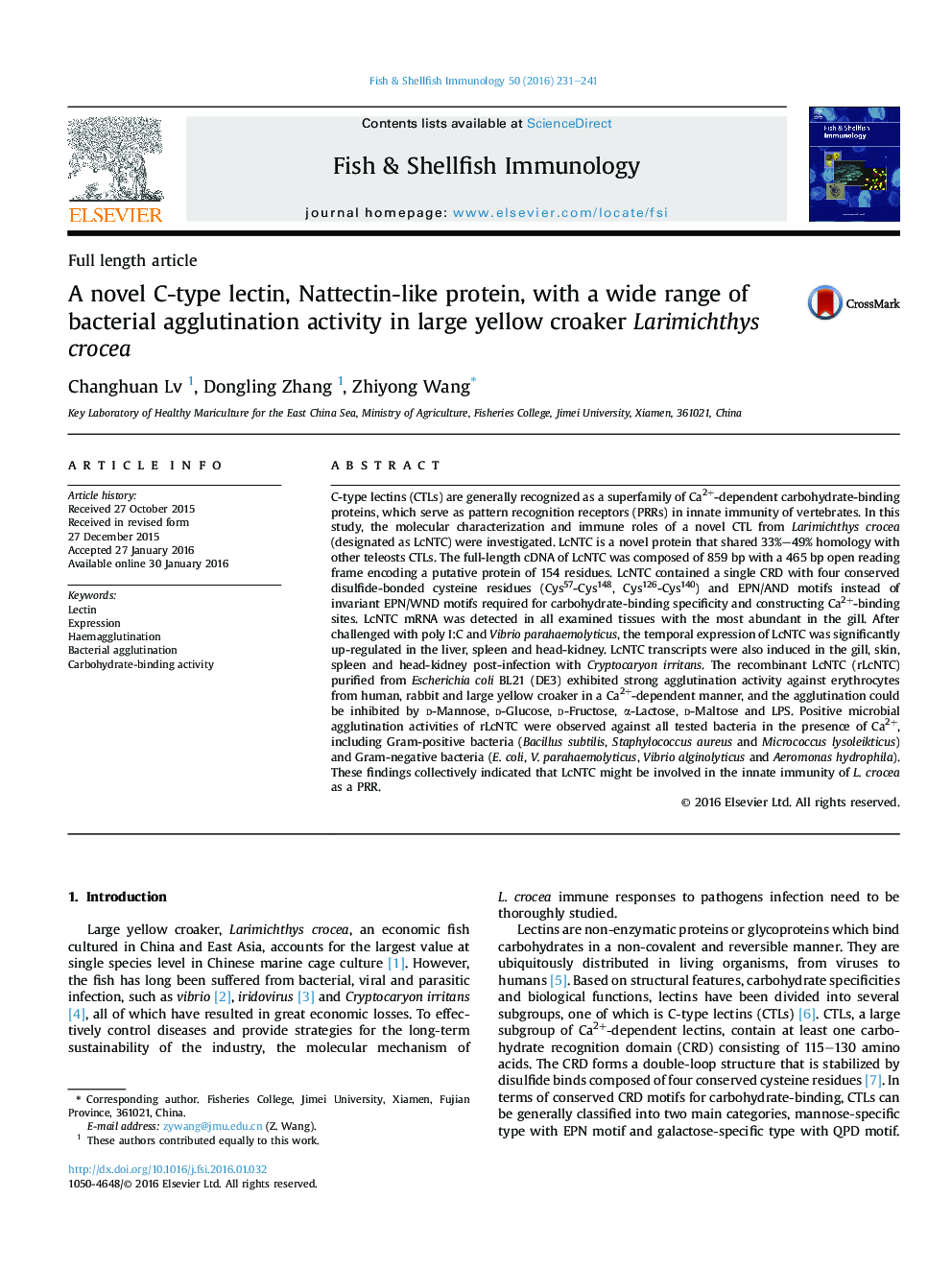| Article ID | Journal | Published Year | Pages | File Type |
|---|---|---|---|---|
| 2430690 | Fish & Shellfish Immunology | 2016 | 11 Pages |
•LcNTC transcripts were induced with various stimulations.•Recombinant LcNTC possessed hemagglutinating activity.•The hemagglutination was inhibited by various sugars.•Recombinant LcNTC displayed a wide range of agglutination against bacteria.
C-type lectins (CTLs) are generally recognized as a superfamily of Ca2+-dependent carbohydrate-binding proteins, which serve as pattern recognition receptors (PRRs) in innate immunity of vertebrates. In this study, the molecular characterization and immune roles of a novel CTL from Larimichthys crocea (designated as LcNTC) were investigated. LcNTC is a novel protein that shared 33%–49% homology with other teleosts CTLs. The full-length cDNA of LcNTC was composed of 859 bp with a 465 bp open reading frame encoding a putative protein of 154 residues. LcNTC contained a single CRD with four conserved disulfide-bonded cysteine residues (Cys57-Cys148, Cys126-Cys140) and EPN/AND motifs instead of invariant EPN/WND motifs required for carbohydrate-binding specificity and constructing Ca2+-binding sites. LcNTC mRNA was detected in all examined tissues with the most abundant in the gill. After challenged with poly I:C and Vibrio parahaemolyticus, the temporal expression of LcNTC was significantly up-regulated in the liver, spleen and head-kidney. LcNTC transcripts were also induced in the gill, skin, spleen and head-kidney post-infection with Cryptocaryon irritans. The recombinant LcNTC (rLcNTC) purified from Escherichia coli BL21 (DE3) exhibited strong agglutination activity against erythrocytes from human, rabbit and large yellow croaker in a Ca2+-dependent manner, and the agglutination could be inhibited by d-Mannose, d-Glucose, d-Fructose, α-Lactose, d-Maltose and LPS. Positive microbial agglutination activities of rLcNTC were observed against all tested bacteria in the presence of Ca2+, including Gram-positive bacteria (Bacillus subtilis, Staphylococcus aureus and Micrococcus lysoleikticus) and Gram-negative bacteria (E. coli, V. parahaemolyticus, Vibrio alginolyticus and Aeromonas hydrophila). These findings collectively indicated that LcNTC might be involved in the innate immunity of L. crocea as a PRR.
